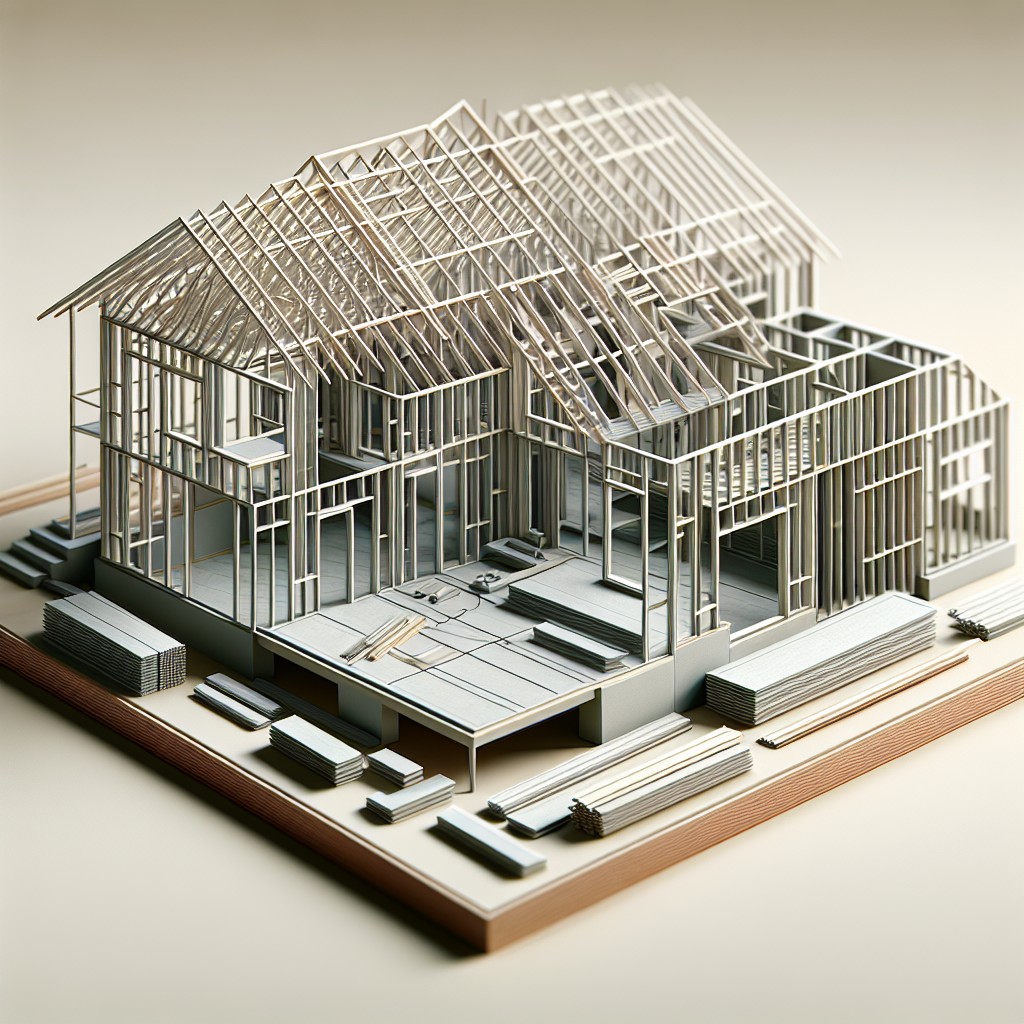Last updated on
The number of ADUs you can build on your property typically depends on local zoning laws and the size of your lot; often, it’s one or two units.
Key takeaways:
- Local zoning laws determine the number of ADUs allowed.
- ADU size is regulated by square footage, height, and lot coverage.
- Research state and local laws and requirements before building.
- The permitting process involves submitting detailed plans and working with local authorities.
- Consider financial implications such as property taxes and insurance.
ADUs Allowable Locations

Navigating the zoning map is the first order of business when planning to build an ADU. Local zoning ordinances dictate the where—certain districts welcome ADUs, while others have restrictions. Typically, single-family zones with sufficient lot space are in the clear, but it’s worth a check to confirm.
It’s also crucial to peek at property setbacks. These invisible lines separate your building space from neighbors and streets, ensuring everyone has their slice of the pie. Your ADU needs to fit within these boundaries, so accurate measurements are non-negotiable.
Now, don’t forget to consider utility connections. If you’re eyeing a spot far from your main house, ponder the distance. Extending services like electricity and plumbing could be a costly affair and, in some cases, might be regulated or limited by local code.
Finally, think about access. An ideal ADU spot offers a clear path for occupants, emergency services, and, if you’re sharing your space, the potential for an independent entrance to avoid a game of “who’s at the door?” with your guests or tenants. Keeping these points in mind will streamline your selection process and help sidestep unexpected hiccups down the road.
ADU Size Regulations
Navigating the labyrinth of ADU size regulations requires a keen understanding of local zoning laws, as these are the primary determinants of how large your auxiliary dwelling can be. Think of these guidelines as a recipe; deviating from the specified measurements could result in a half-baked project.
First and foremost, ADUs often have a maximum square footage limit, which might be expressed as a percentage of the primary residence’s size or as an absolute figure. So, if the main house is a sprawling 2,000 square feet, an ADU could be limited to, say, 800 square feet, which is plenty of room for comfort without stepping on the toes of the primary abode.
Next up, height restrictions typically come into play. Your planned ADU shouldn’t loom over the main house or the neighbor’s vegetable garden like an overzealous sunflower. Height limitations ensure the structure meshes well with existing neighborhood aesthetics and doesn’t obstruct views or sunlight.
Additionally, there’s the concept of lot coverage, which stipulates the proportion of the land that can be built upon. Adding an ADU means you’re eating into your lot’s buildable pie — make sure you don’t bite off more than regulations allow.
Remember, these size regulations vary widely across jurisdictions. Check with local planning departments or site-specific ordinances to avoid any hitches in your project. After all, it’s better to measure twice and pour concrete once.
Understanding Legal Requirements for ADUs in Mississippi
Before breaking ground on your accessory dwelling unit in Mississippi, familiarizing yourself with state and local laws will save you a boatload of time and headaches. Each city or county might have its own set of rules, so don’t make assumptions based on what you’ve heard about ADU regulations elsewhere.
The first stop is often your local zoning office. Here, you can get the scoop on zoning laws that determine whether you can build an ADU on your property. They’ll let you know if your area is zoned for single-family residences only, or if it’s ADU-friendly.
Building codes are the next piece of the puzzle. These govern the safety and structural standards your ADU must comply with. For example, there might be specific requirements for electrical systems, plumbing, and emergency exits. It’s like putting together a complex Lego set; each piece needs to fit just right to ensure the final structure stands strong and meets code.
Now, don’t forget about neighbor notifications—some places require that you give the folks next door a heads-up about your construction plans. It’s a bit like inviting them to a party—courtesy is key.
Lastly, the historic preservation guidelines might come into play if your home is on historic land. In this case, there might be restrictions on the design and materials you can use for your ADU to maintain the area’s historic charm. Think of it as keeping your new addition in sync with the neighborhood’s vintage vibe.
In sum, while the idea of adding an ADU to your property in Mississippi is exciting, ensuring all legal ducks are in a row is critical. This is one instance where doing your homework really does pay off.
Grasping the ADU Permitting Process in Mississippi
Before diving into construction, getting that official thumbs-up from the powers that be is essential. Mississippi requires you to navigate a series of permitting steps to legally build an ADU:
First up, visit your local building department or check their website. You’re looking for application forms for ADU construction. Sometimes called “secondary dwelling units” or “granny flats,” these forms are your golden ticket to starting the process.
Secondly, be prepared to show detailed plans of your proposed ADU. This includes floor plans, elevations, and how it will snugly fit on your property without ruffling any neighborhood feathers or breaking any zoning laws.
Remember, patience is a virtue here – processing times can vary. While some folks find their approvals come faster than anticipated, others may discover it’s a bit of a waiting game.
Pro tip: Don’t go it alone – consider enlisting the expertise of a local ADU specialist or architect. They’re usually well-versed in the ins and outs of local regulations and can help streamline your permitting voyage.
Lastly, be ready for a bit of back-and-forth. You might need to tweak your plans to meet specific requirements or jump through a few extra hoops.
Keep in mind, staying on top of this process from the get-go can save you a mountain of headaches later on. A clear path now means no ugly surprises when you’re knee-deep in your ADU adventure.
Financial Considerations: ADU Property Taxes and Insurance in Mississippi
When diving into the ADU world, you’ll want to pull out your calculator for a second look at the numbers — particularly regarding property taxes and insurance. Adding an ADU to your premises might cause a stir in your property tax bill. It’s typically tied to the added value the ADU brings to your property. Picture this: your cozy little backyard cottage is like a new sparkle on an old ring. Naturally, it’s going to bump up the value.
But it isn’t all taxing news. Remember, Mississippi tends to have lower property taxes than many states, so the increase might be less shocking than you’d think. Moving on to insurance, think of it as strapping a safety belt around your wallet. You’ll need to extend your homeowner’s insurance to cover the ADU, protecting you from potential surprises down the line — like Cousin Joe slipping on a banana peel during his staycation in your new guest house. Yes, it means a higher premium, but peace of mind? Priceless.
It pays to chat with your local tax assessor and insurance agent. They’re like financial tour guides, offering you the lay of the land before you make the leap. Dive deep into the specifics, so you stay informed and can budget accordingly. Remember to stay abreast of any local tax incentives for ADU construction too — it can be the cherry on top of your investment sundae.
Related reading:
Table of Contents





